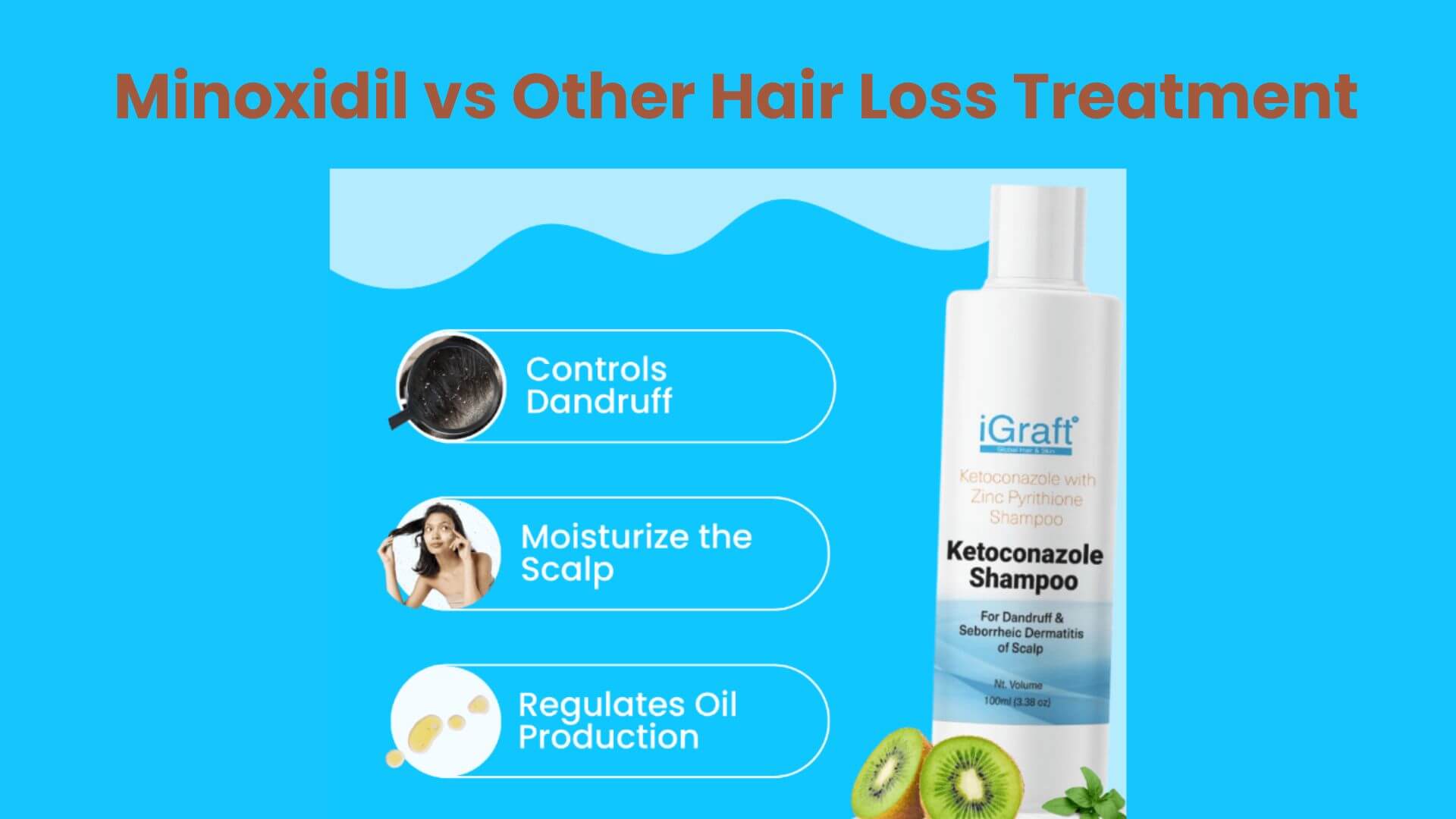Minoxidil vs Other Hair Loss Treatments: A Comparative Analysis with iGraft
Minoxidil vs Other Hair Loss Treatments: A Comparative Analysis with iGraft
Introduction:
Hair loss affects millions of people worldwide, impacting self-esteem and confidence. In the quest for effective solutions, individuals often encounter a plethora of treatments, each claiming to restore hair growth. Among these options, Minoxidil stands out as a widely recognized topical solution. However, advancements in hair restoration techniques, such as those offered by iGraft, introduce new possibilities. This blog aims to provide a comparative analysis between Minoxidil and other hair loss treatments, particularly exploring the innovative approaches by iGraft.
Understanding Minoxidil:
Minoxidil, originally developed as an oral medication for hypertension, was later discovered to have hair growth-promoting properties when applied topically. Available over-the-counter, Minoxidil is applied directly to the scalp, where it works by improving blood flow to hair follicles and extending the growth phase of hair.
Exploring Other Hair Loss Treatments:
Beyond Minoxidil, various treatments address hair loss through different mechanisms. These include:
- Finasteride (Propecia): An oral medication that inhibits the conversion of testosterone to dihydrotestosterone (DHT), a hormone linked to hair loss.
- Platelet-Rich Plasma (PRP) Therapy: A procedure that involves injecting platelet-rich plasma derived from the patient’s blood into the scalp to stimulate hair growth.
- Hair Transplantation: Surgical techniques such as Follicular Unit Transplantation (FUT) and Follicular Unit Extraction (FUE) involve transplanting hair follicles from donor areas to balding or thinning areas.
- Low-Level Laser Therapy (LLLT): Utilizes laser devices to stimulate hair follicles and promote hair growth.
Comparative Analysis with iGraft:
iGraft represents a paradigm shift in hair restoration by offering advanced techniques tailored to individual needs. Here’s how iGraft compares to Minoxidil and other treatments:
- Personalized Treatment Plans: iGraft utilizes advanced diagnostic tools to assess the root cause of hair loss and develop customized treatment plans, ensuring targeted and effective solutions.
- Permanent Results: Unlike topical solutions like Minoxidil, iGraft’s hair transplantation techniques offer permanent results by transplanting healthy hair follicles to areas of thinning or baldness.
- Natural-Looking Results: iGraft’s FUT and FUE techniques deliver natural-looking results with minimal scarring, providing patients with aesthetically pleasing outcomes.
- Long-Term Benefits: While Minoxidil requires continuous application to maintain results, iGraft’s hair transplantation provides long-term benefits, reducing the need for ongoing treatments.
Conclusion:
While Minoxidil and other hair loss treatments offer viable options for addressing hair loss, innovative approaches like those offered by iGraft present new possibilities for achieving natural-looking and long-lasting results. By understanding the comparative advantages of each treatment option, individuals can make informed decisions tailored to their unique needs and preferences, ultimately restoring confidence and quality of life.

